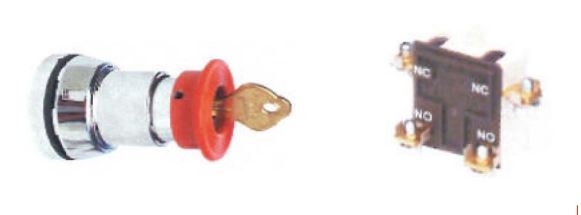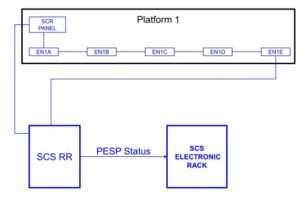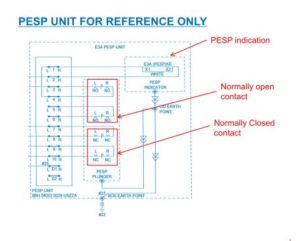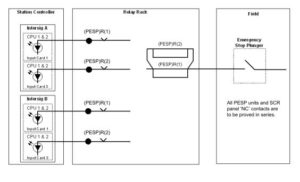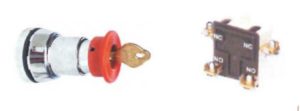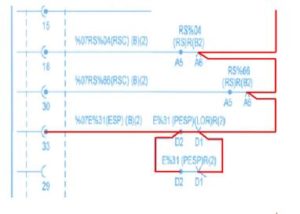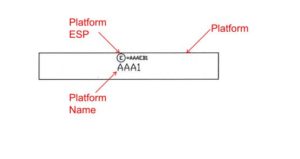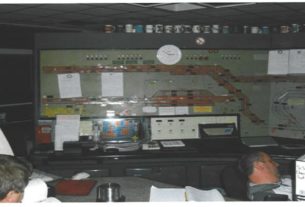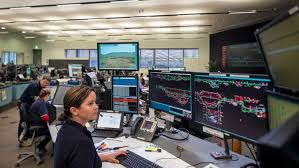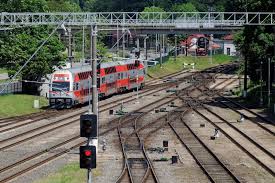Platform Emergency Stop Plunger(PESP) Railway
Platform Emergency Stop Plunger(PESP) Railway :- * Five Emergency Stop Plungers shall be provided at each platform for the use of passengers and staffs to stop the train in case of emergency.
* One Emergency Stop Plunger for each platform shall be provided in the Station control Room (SCR) panel.
* These are used in an emergency to prevent trains from entering the platform or to emergency brake trains which are already on platform.
* For platforms which are having PDIU then PESP units are not required at platform, only ESP at SCR panel will be provided per platform. Because already the passengers and staffs are protected by platform doors.
PESP UNIT FOR REFERENCE ONLY
* In the PESP unit, the ‘NO’ contact is used to illuminate the PESP indicator when the PESP is activated.
* The ‘NC’ contact of each PESP unit in a platform are proved in series including SCR panel ESP ‘NC’ contact to pickup the PESP activation relay ((PESP) R) in relay rack.
* In normal operation the SCS relay rack shall continuously report in a fail safe manner the status of each platforms PESP to the SCS electronics rack through (PESP)R relay.
If any one of the PESP is activated then
– the ‘NO’ contact of the activated PESP unit will be closed and WHITE indication will be lighting on PESP unit and SCR panel.
– the ‘NC’ contact of the activated PESP unit will be open and the (PESP) R relay will be de-energised.
– SCS will detect the PESP activation and report the status of activated ESP to VCC.
– VCC immediately close the associated tracks containing the activated ESP thus preventing any trains under automatic control from advancing their target point into the closed track. Trains moving those closed tracks will be emergency braked to a stop.
* The plunger operates two ‘push to break’ contacts, and locks in the pushed position. So, if the PESP is activated, then the push button will be locked in pushed position i.e PESP will be in activated position.
* PESP unit is fitted with a key release mechanism to return the plunger to the normal position.
* The PESP can be overridden by means of a VCC command (SCC override) as well as from the SCR control panel (Local override) on the platform.
* The Local override will be done from SCR panel by station operator, that will bypass the activation of all emergency stop plungers at platform including in the SCR, such that their activation does not close any tracks and affect train operation.
* This local override activation will be indicated in SCR panel and also SMC workstation. The SMC will monitor the active/inactive status of the PESP override device via the SMC PLC non-vital interface.
(Local Override)
* An override switch per platform is provided in the SCR panel in order to mask the operation of PESP of a particular platform.
* When Local Override is operated in SCR panel then (PESP)(LOR)R relay will be energized in relay rack then the (PESP)R relay will be by-passed.
SCC OVERRIDE
* The SCC (Service Control center) override will be done at SCC by VCC operator, to open the closed track to allow the train operation.
* The VCC will send the status of the override to SMC and SMC will generate a alarm.
* The SMC will send the active/inactive status of ESP override as indicated by VCC via SMC non-vital interface, to provide an indication in the relevant SCR.
* ESP activation will not have any affect on RM mode train operation.
* ESP activation will not have any affect on Route Secure aspects.
* For stations which are not having SCS, the PESP will be controlled and monitored by adjacent station which is having SCS.
PESP Symbol shown in SSP:
